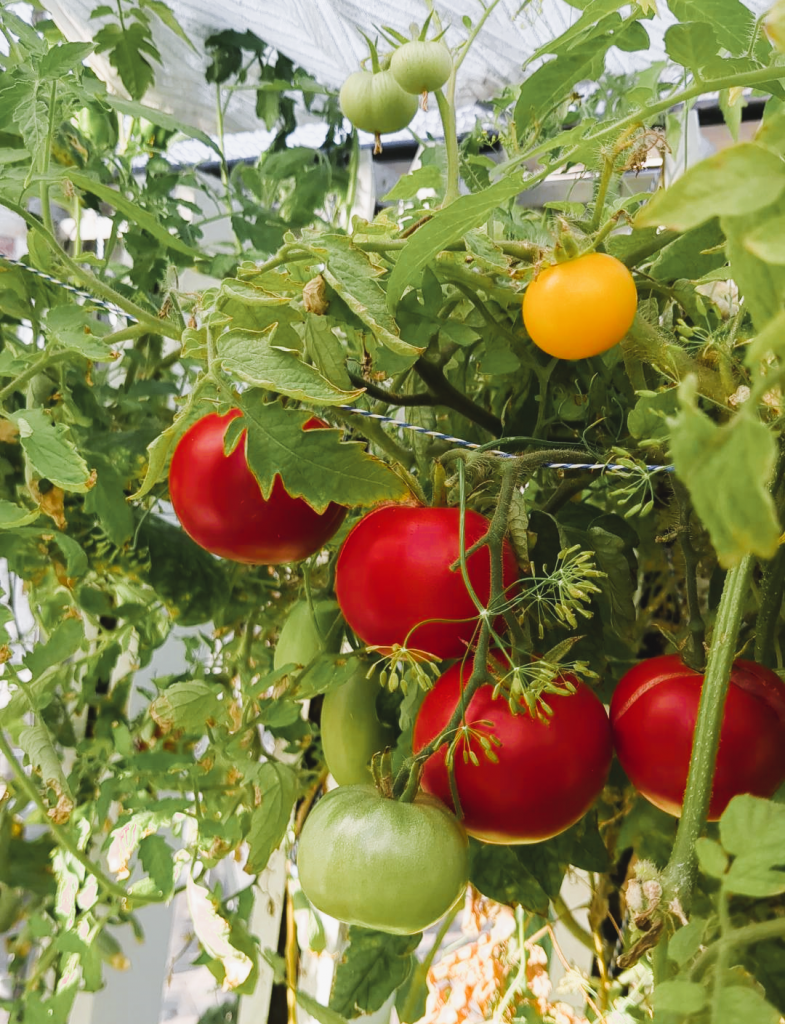If someone asks you why you should grow your plants under greenhouse, you’re likely to say: “to protect your crops from the cold, of course”. And it’s quite normal to think that because it’s correct.
But it’s more unusual to hear people reply: “the greenhouse protects against the heat in summer”.
So, have you ever wondered why you can see square kilometers of professional greenhouses in the desert? Isn’t it hot enough to grow crops directly in the sun in Tunisia or southern Spain? And even in Europe, why put-up greenhouses when the climate is getting warmer? 🥵
This article is very likely to surprise you and teach you a lot of fascinating things about climate management in greenhouses.
Because yes, you’re going to see, the greenhouse is very useful, even becoming indispensable for heat management.
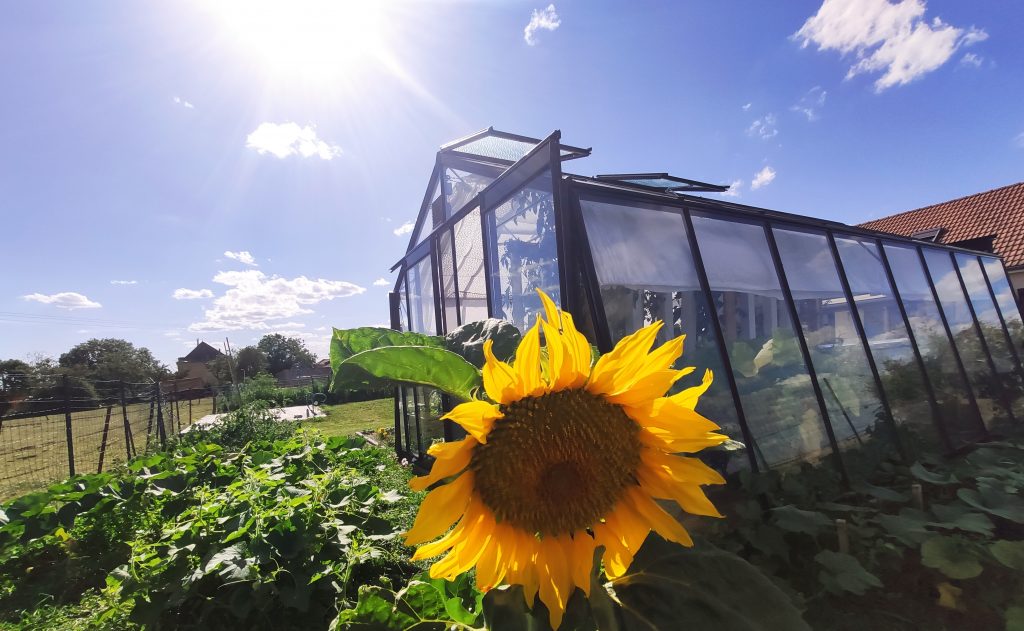
Greenhouses wrongly suffer from a poor image.
Yet they are a way of contributing to locally sourced production. Recent debates about organic labelling and the use of heated greenhouses have tended to crystallize opinions around caricatured arguments. Organic producers are looking to protect their market, and that’s normal. This is especially true given the difficult economic climate for organic farming, which has been hit hard by the crisis (rising prices, organic farms returning to conventional farming due to a lack of funds, resale of unused conventional stocks, etc.). However, all subjects are mixed up in the debate. Respect for ‘natural cycles’, soil-less or soil-less cultivation, heating greenhouses, imported or local produce, etc…
In fact, there is a slight difference between a pesticide-free local crop grown in the open ground in an unheated greenhouse and a Spanish soilless crop grown in the middle of winter in a heated greenhouse.
10,000 ha: that’s the surface area in France devoted to greenhouse cultivation (2/3 of which is devoted to vegetable crops), representing 6.4 million tonnes of vegetables a year, i.e. almost half the national production!
Source : Vegetables from France et agriculture.gouv.fr
In practical terms, it’s perfectly possible to grow vegetables under greenhouse in an environmentally friendly, natural way that respects the natural cycles of the varieties. And with global warming, greenhouses are becoming a necessity. And this applies to both professional market gardeners and home gardeners. Climatic hazards (floods, heatwaves, hailstorms, strong winds) are a growing concern for farmers. Today, half of France’s vegetable production takes place under glass.
But if we have heatwaves, how can the greenhouse not add another layer? Here’s how.
Let’s start with a bit of theory.
Here we’re talking about greenhouse models with bioclimatic features. We’re talking about a closed or semi-open translucent structure, preferably made of glass, supported by a metal frame, designed for agricultural/market gardening or horticultural production. A bioclimatic greenhouse regulates and maintains the parameters that influence crop growth.
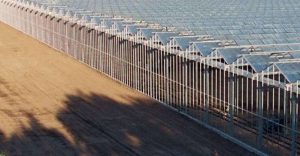
The height of the greenhouse will help to “buffer” the heat, thanks to the volume of air between the ridge and the ground. In fact, the higher the greenhouse, the more favorably the greenhouse effect is controlled, and the greater the inertia. That’s why Dutch-style chapel greenhouses are so high (sometimes up to 12 meters!). However, they retain 90% of the light (horticultural glass, thin profiles).
In cold weather, the greenhouse is a natural heating device (the greenhouse effect). In fact, 1m2 of glass heated by the sun is equivalent to an 800-watt radiator1. Gardeners who grow under greenhouse are aware of this, as they soon find themselves in t-shirts in winter as soon as the sun hits the windows. In fact, housing architects favor south-facing glazing in passive houses. This is the most ecological (and economical!) way of harnessing the sun’’s energy for heating.
In hot weather, climate control devices are used to regulate the temperature precisely:
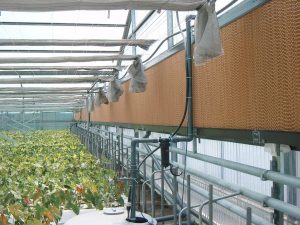
Finally, very important: thermal variation: crops, especially fruit vegetables (tomatoes, etc.), do not appreciate temperature variations. Cold at night and damp in the morning and too high a temperature during the day are limitations to good yields. For example, in the case of tomatoes 🍅, be aware that above 30°C, fruiting slows down and is halted as soon as the temperature rises above 35°C. Then, plant tissue can be damaged if the temperature rises above 38°C or drops below 10°C. The ideal day/night difference is between 6 and 10°C to maximize fruit production. The optimum daytime temperature is 25°C and 17°C at night. Growing under greenhouse will enable you to maintain these differences and temperature levels.
On the scale of home greenhouse growing, the use of bioclimatic systems can produce surprising results.
At Myfood, we’ve tried out and implemented a few features that you’‘ll find in the Family22 greenhouse, including:
On the Myfood connected dashboard, we measure the daily temperatures inside the greenhouse using connected temperature sensors. The outside temperature is taken from weather station data. But more visually, here’s a ‘traditional’ thermometer temperature reading. The reading is 40°C outside the greenhouse in full sunshine on a day in August, and 30°C inside the aquaponic crops.
That’s a difference of 10°C between outside and inside!
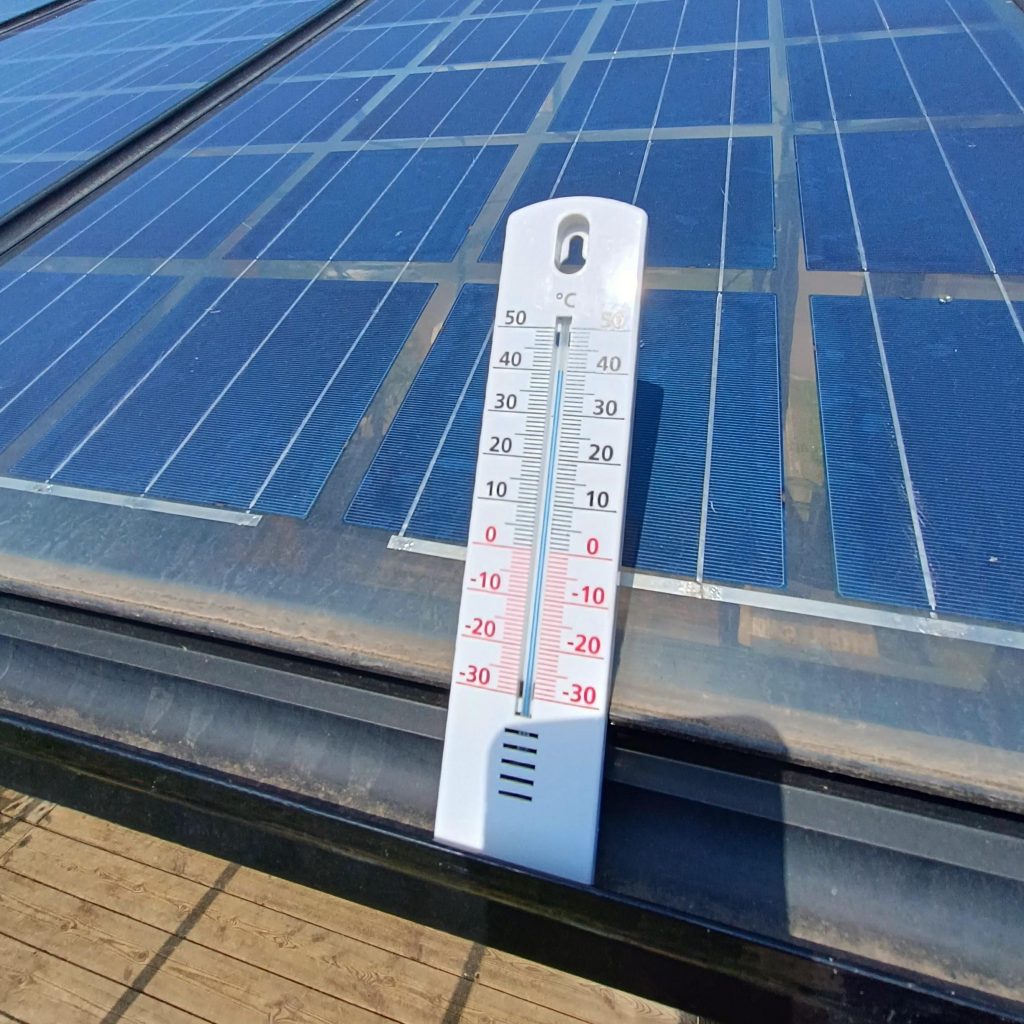
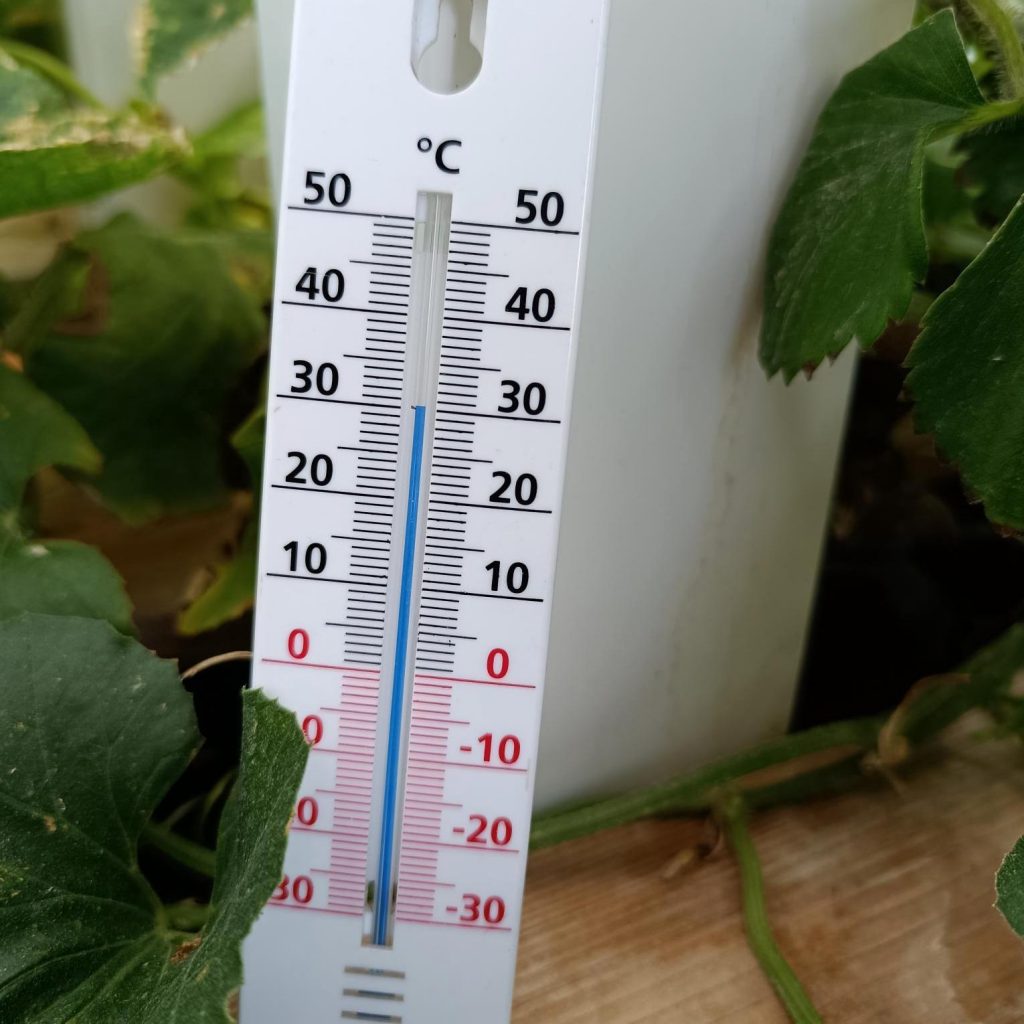
The tomato plants benefit from conditions that allow them to work and continue growing their fruit, which would not have been possible in full sun. What’s more, these same tomatoes in greenhouses won’t have to suffer from storms, hail or downpours.
In conclusion, even in the heat of August, the greenhouse is extremely beneficial to crops and yields. CQFD.
